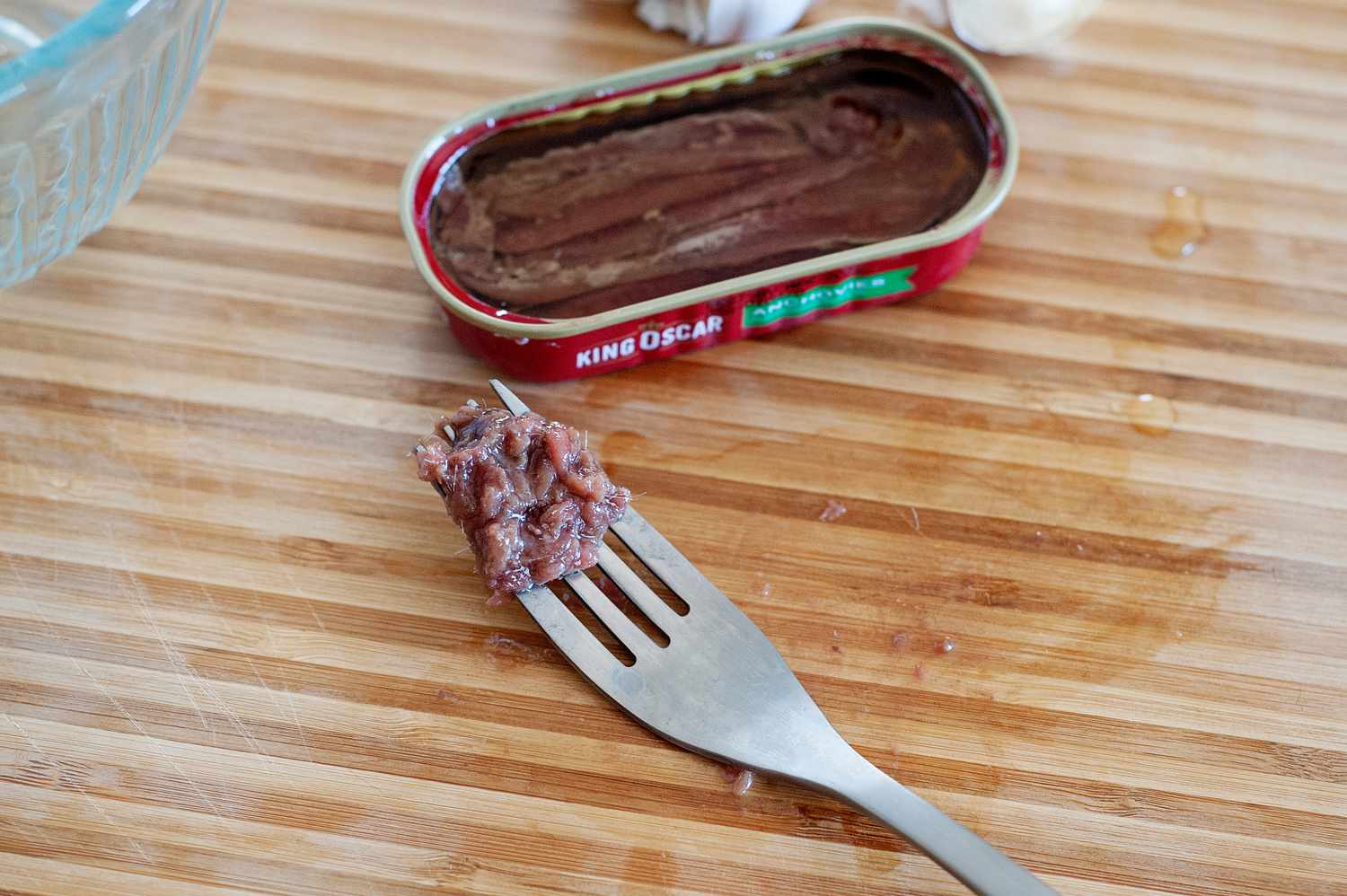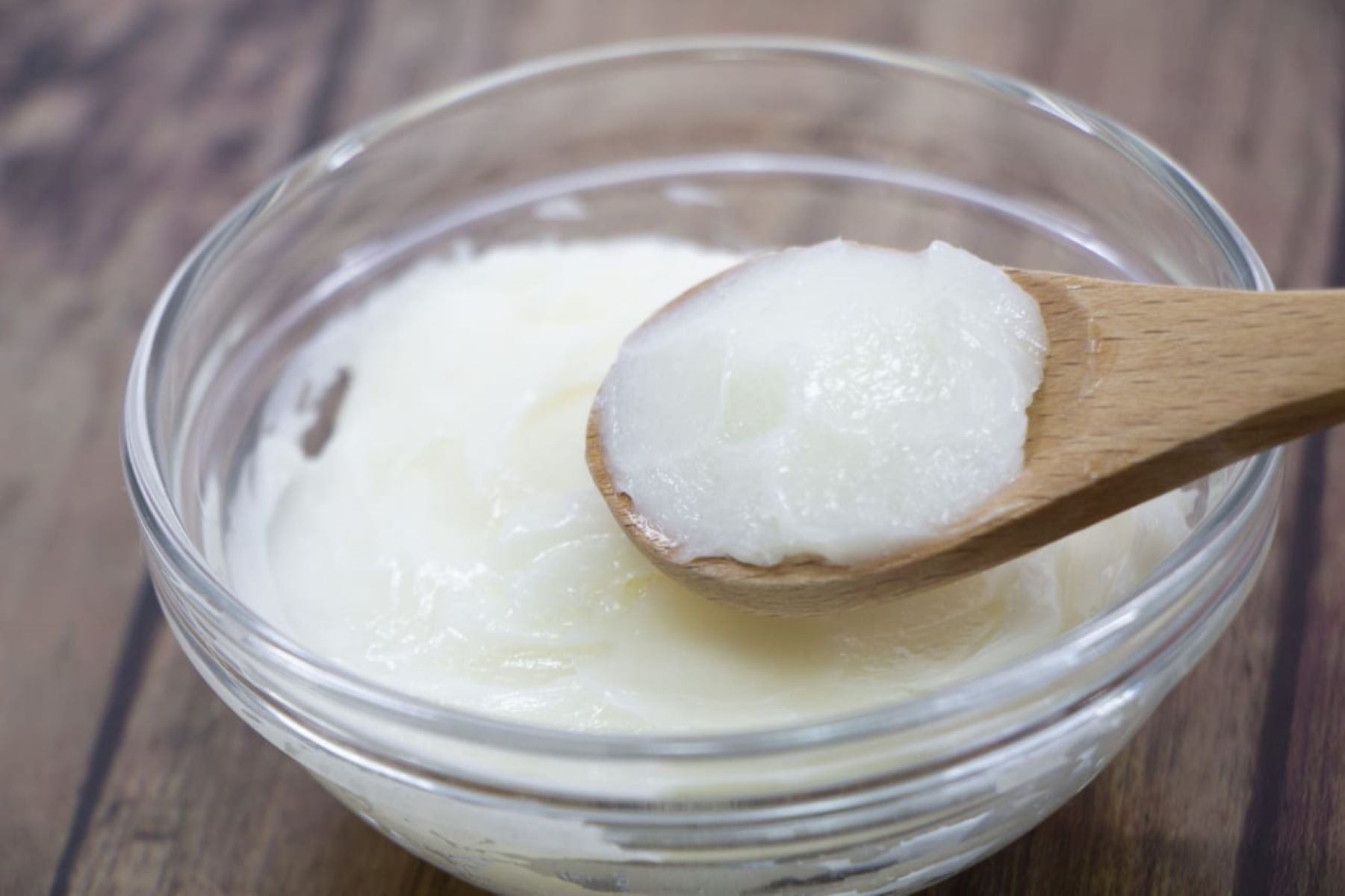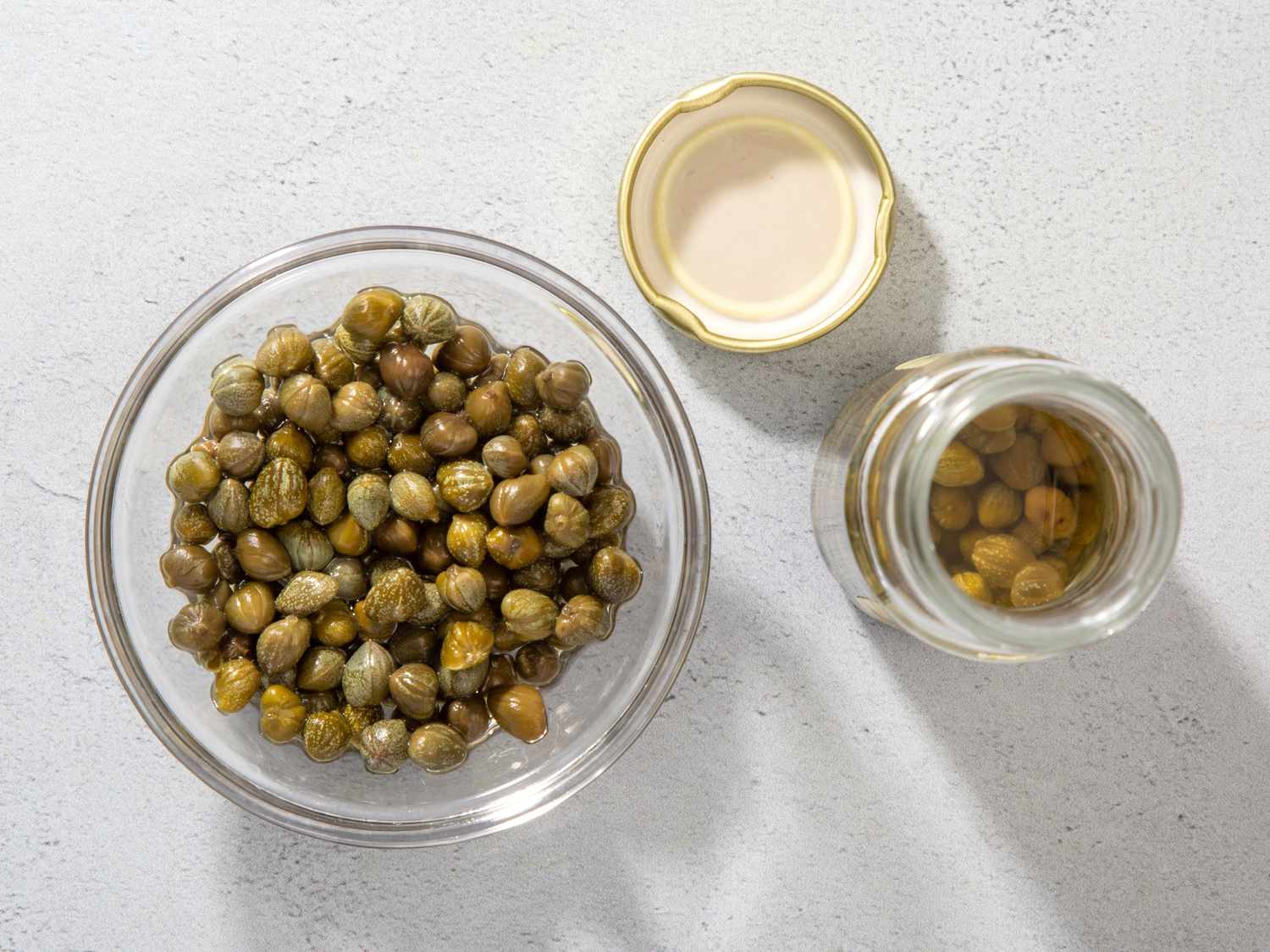

Articles
How To Store Miso Paste After Opening
Modified: January 6, 2024
Learn the best methods for storing miso paste after opening in this informative article. Keep your miso fresh and flavorful for longer periods.
(Many of the links in this article redirect to a specific reviewed product. Your purchase of these products through affiliate links helps to generate commission for Storables.com, at no extra cost. Learn more)
Introduction
Miso paste is a staple ingredient in Japanese cuisine, known for its unique flavor and versatile use in various dishes. Made from fermented soybeans, salt, and koji (a type of mold), miso paste adds depth and richness to soups, marinades, dressings, and more. However, once you’ve opened a container of miso paste, proper storage becomes crucial to ensure its freshness and extend its shelf life.
Understanding how to store miso paste correctly not only helps to maintain its taste and quality but also prevents it from spoiling prematurely. In this article, we will delve into the importance of proper storage and provide you with helpful tips on how to store miso paste after opening. So, whether you’re a miso lover or new to this flavorful condiment, read on to ensure your miso paste stays fresh for as long as possible.
Key Takeaways:
- Properly storing miso paste after opening is crucial to maintain its quality, flavor, and shelf life. Whether refrigerating, freezing, vacuum sealing, or using glass jars, the right storage method preserves the freshness for extended culinary enjoyment.
- By following storage tips and techniques, you can ensure your miso paste remains flavorful and ready to enhance your culinary creations for months to come. Experiment with different storage methods to fully appreciate the unique characteristics of miso paste.
Read more: How To Store Miso Paste
Understanding Miso Paste
Before we dive into the details of storing miso paste, let’s take a moment to understand what it is and why it’s worth preserving properly. Miso paste is a traditional Japanese ingredient that has been around for centuries. It is made through a natural fermentation process, where soybeans are combined with koji (a type of fungus) and salt, and left to ferment for a certain period of time.
The fermentation process gives miso paste its unique savory and umami flavor. Umami, often referred to as the fifth taste, is a pleasant savory taste that enhances the overall flavor profile of a dish. Miso paste can vary in color and taste, depending on factors such as the length of fermentation and the types of grains or beans used.
Miso paste is typically used in a variety of dishes, including miso soup, marinades for meats and vegetables, salad dressings, and glazes. Its versatility and depth of flavor make it a beloved ingredient in Japanese cuisine and increasingly popular in other parts of the world.
Different types of miso paste are available, ranging from light to dark. White miso paste, also known as Shiro miso, is the mildest and sweetest variety, with a shorter fermentation time. It is often used in lighter soups and dressings. On the other hand, red miso paste, known as Aka miso, has a longer fermentation period and a robust, intense flavor. It is well-suited for heartier dishes and rich sauces.
Now that we have a basic understanding of miso paste, let’s explore why proper storage is crucial to maintain its quality and taste.
Why Proper Storage is Important
Proper storage is essential for preserving the quality and flavor of miso paste after it has been opened. Here are a few reasons why it’s important to store miso paste correctly:
1. Prevents Spoilage: Miso paste is a fermented product, and like any other fermented food, it is susceptible to spoilage. Exposure to air, moisture, and contaminants can lead to the growth of undesirable microorganisms, resulting in spoilage and an unpleasant taste. By storing miso paste properly, you can minimize the risk of spoilage and ensure that it remains safe to consume.
2. Preserves Flavor: Miso paste contains live enzymes that contribute to its unique flavor profile. However, prolonged exposure to heat, light, and air can cause the enzymes to deteriorate, resulting in a loss of flavor. Storing miso paste in the right conditions helps to preserve these enzymes and maintain its rich, complex flavors.
3. Extends Shelf Life: When miso paste is stored correctly, it can have a relatively long shelf life. The exact duration varies depending on the type of miso and the storage method used, but typically, miso paste can last for several months to a year after opening. Proper storage helps to slow down the fermentation process and prevent the paste from spoiling prematurely.
4. Cost-effective: Miso paste is not only flavorful but also a valuable ingredient. It can be quite expensive, especially if you opt for high-quality artisanal varieties. By storing miso paste properly, you can ensure that every spoonful is used efficiently, avoiding unnecessary waste and saving money in the long run.
Now that we understand why proper storage is important, let’s explore some practical tips on how to store miso paste after opening.
Tips for Storing Miso Paste
Properly storing miso paste after it has been opened is crucial for maintaining its quality and extending its shelf life. Here are some practical tips to help you store miso paste effectively:
1. Keep it airtight: Exposure to air can cause miso paste to dry out and lose its flavor. After opening the package, transfer the miso paste to an airtight container. Ensure that the container has a tight-fitting lid to prevent air from entering and affecting the quality of the paste.
2. Store in a cool place: Miso paste is best stored in a cool environment. Ideally, keep it in the refrigerator, where the temperature is consistently low. Avoid storing miso paste near the door or in the warmer areas of the fridge, as temperature fluctuations can compromise its quality. If refrigerator space is limited, you can also store miso paste in a cool pantry or cellar.
3. Avoid direct sunlight and heat: Exposure to sunlight and heat can accelerate the fermentation process of miso paste and lead to spoilage. To preserve its flavor and quality, store miso paste away from direct sunlight and sources of heat, such as the stove or oven. Opt for a shaded area in the pantry or a cool corner in the refrigerator.
4. Use a clean utensil: When scooping miso paste out of the container, always use a clean utensil. The introduction of bacteria or other contaminants can promote spoilage and affect the taste of the miso paste. Avoid double-dipping with the same utensil to maintain optimal hygiene.
5. Practice proper hygiene: Ensure your hands are clean before handling miso paste. Sanitize the container or jar before transferring the miso paste to avoid introducing any bacteria or mold. Proper hygiene practices will help prevent contamination and maintain the freshness of the miso paste.
By following these tips, you can ensure that your miso paste remains flavorful and ready to enhance your culinary creations. In the next section, we will explore various methods for storing miso paste.
Method 1: Refrigeration
Refrigeration is one of the most common and effective methods for storing miso paste after it has been opened. Here’s how you can properly store miso paste in the refrigerator:
1. Transfer to an airtight container: After opening the package of miso paste, transfer it to an airtight container. Glass or ceramic containers with a tight-fitting lid are ideal for this purpose. Make sure the container is clean and dry before transferring the miso paste.
2. Label the container: It can be helpful to label the container with the date of opening to keep track of its freshness. Miso paste can last for several months to a year when stored properly, but labeling the container can help you know when it’s time to use it or check for any signs of spoilage.
3. Store in the refrigerator: Place the airtight container of miso paste in the refrigerator. The consistent low temperature of the refrigerator will help slow down the fermentation process, keeping the miso paste fresh for an extended period. Aim to store the miso paste in the back of the refrigerator where the temperature is most stable.
4. Use within a reasonable time frame: While refrigerating miso paste can extend its shelf life, it’s still recommended to use it within a reasonable time frame. The flavor and quality of miso paste gradually deteriorate over time. Generally, it is best to consume refrigerated miso paste within six months to a year, depending on the type and quality of miso.
It’s worth noting that refrigerated miso paste might develop a layer of light-colored mold on its surface. This is a natural occurrence and commonly known as “miso bloom.” The mold is harmless and can be scraped off before using the miso paste. However, if the mold is darker in color, has an offensive odor, or the miso paste shows other signs of spoilage, it’s best to discard it.
Refrigeration is a reliable method for storing miso paste, but there are other options available as well. In the following sections, we will explore alternative methods, including freezing and vacuum sealing, that can help extend the shelf life of miso paste even further.
Read more: How To Store Miso Soup
Method 2: Freezing
Freezing miso paste is another effective method for extending its shelf life. Freezing helps to halt the fermentation process and preserves the flavor and quality of the paste. Follow these steps to properly freeze miso paste:
1. Portion the miso paste: Divide the miso paste into smaller portions before freezing. This allows you to thaw only the amount you need without repeatedly thawing and refreezing the entire container. Consider using ice cube trays or small freezer-safe containers to portion the miso paste.
2. Wrap and seal tightly: Wrap each portion of miso paste tightly in plastic wrap or place them in freezer-safe bags. Make sure to remove any excess air from the packaging before sealing to prevent freezer burn. Alternatively, you can store the portions in airtight containers suitable for freezing.
3. Label and date the packaging: To keep track of the storage time and prevent confusion, label each wrapped portion or container with the date of freezing. This will help you identify the oldest miso paste when you need to use it and ensure you rotate the portions to prevent them from sitting in the freezer for too long.
4. Store in the freezer: Place the wrapped or packaged miso paste portions in the freezer. Choose a spot where the temperature remains constant and doesn’t fluctuate too much. The frozen miso paste can be stored for several months to a year, but it’s best to use it within six months for the best flavor.
5. Thaw before use: When you’re ready to use the miso paste, thaw the desired portion in the refrigerator overnight. Avoid thawing at room temperature to prevent any potential bacterial growth. Once thawed, the miso paste can be used as usual in your recipes.
Keep in mind that freezing can change the texture of miso paste slightly, but it will not significantly impact the taste or quality. The frozen miso paste might develop a darker color or become grainy upon thawing, but this is normal and doesn’t affect its usability.
Freezing is a convenient method for storing miso paste, especially if you have a surplus or want to stock up on miso paste for future use. However, if you prefer another method that doesn’t alter the texture, consider vacuum sealing, as discussed in the next section.
Store miso paste in an airtight container in the refrigerator after opening. This will help preserve its flavor and prevent it from drying out.
Method 3: Vacuum Sealing
Vacuum sealing is an excellent method for storing miso paste as it helps to remove air and moisture, which can accelerate spoilage. Here’s how you can properly vacuum seal miso paste:
1. Transfer miso paste to a vacuum-sealable bag: After opening the package of miso paste, transfer it to a vacuum-sealable bag or container. Ensure that the bag is suitable for vacuum sealing and can withstand freezing, if desired. It’s essential to choose a bag that is specifically designed for use with a vacuum sealer.
2. Remove excess air: Place the miso paste into the vacuum-sealable bag and seal it according to the manufacturer’s instructions. Some vacuum sealers may require you to manually remove the air using a handheld pump, while others have an automatic sealing and vacuuming function. The goal is to create an airtight environment around the miso paste.
3. Label and date the packaging: To keep track of its freshness and usage, label the vacuum-sealed bag with the date of sealing. Additionally, write down the recommended storage time and any other essential details. This will help you identify the miso paste easily and ensure that it is used within the recommended timeframe.
4. Store in the refrigerator or freezer: Once vacuum-sealed, store the miso paste in the refrigerator or freezer, depending on your preference and storage needs. Vacuum-sealed miso paste can be kept in the refrigerator for several months or in the freezer for an extended period. Ensure to place it in a cool area with a stable temperature.
5. Thaw and use as needed: When you’re ready to use the miso paste, thaw it in the refrigerator if it was stored in the freezer. Vacuum-sealing helps to preserve the quality and flavor of the miso paste, so it should thaw without any noticeable changes. Use the miso paste as you would normally in various culinary dishes.
Vacuum sealing is a great option if you want to store miso paste for an extended period, whether in the refrigerator or freezer. The airtight seal helps to prevent air and moisture from reaching the paste, ensuring its freshness and taste for a longer duration.
Now that you’re familiar with vacuum sealing, let’s discuss another method that involves using glass jars for storing miso paste.
Method 4: Using Glass Jars
Using glass jars is a simple yet effective method for storing miso paste after it has been opened. Glass jars provide airtight storage and protect the miso paste from exposure to light and air. Here’s how you can store miso paste using glass jars:
1. Choose the right-sized jar: Select a clean glass jar with a tight-fitting lid. The size of the jar should be suitable for the amount of miso paste you have. It’s best to choose a jar with minimal headspace to minimize air contact.
2. Transfer miso paste to the jar: Open the package of miso paste and carefully transfer it to the glass jar. Use a clean spoon or spatula to scoop the miso paste into the jar. Try to avoid leaving any air gaps between the paste and the lid.
3. Press down and smooth the surface: Once the miso paste is in the jar, press it down gently with the back of the spoon or a clean utensil. Smooth the surface to remove any air pockets and create a compact layer of miso paste.
4. Wipe the jar rim and seal: Before sealing the jar, make sure the rim is clean and free from any miso paste residue. Wipe it with a clean cloth or paper towel to ensure a tight seal. Then, securely fasten the lid on the jar to create an airtight environment.
5. Label the jar: Consider labeling the jar with the date of transfer and any other relevant information. This will help you keep track of the storage time and identify the miso paste later on.
6. Store in a cool place: Place the glass jar in a cool and dark place, such as a pantry or cupboard. Avoid storing it near sources of heat or in direct sunlight, as these can diminish the quality of the miso paste.
By using glass jars, you create a sealed and protected environment for the miso paste, helping to maintain its flavor and prevent spoilage. It’s recommended to store miso paste in glass jars for up to six months, but it can last even longer if stored properly.
Now that you’re familiar with various methods for storing miso paste, let’s discuss how long miso paste can be stored and how to recognize signs of spoilage.
How Long Can Miso Paste Be Stored?
The shelf life of miso paste can vary based on factors such as the type of miso, storage conditions, and whether the paste has been opened or not. Here are some general guidelines for storing miso paste:
1. Unopened miso paste: If the package of miso paste is unopened, it can typically be stored in a cool, dry pantry or cupboard for up to one year. The miso paste should be stored in its original packaging, ensuring that it is tightly sealed.
2. Opened miso paste: Once a package of miso paste has been opened, it should be transferred to an airtight container and stored in the refrigerator or freezer. Refrigerated miso paste can maintain its quality for several months to a year. Frozen miso paste, when properly packaged, can last even longer.
3. Quality and taste over time: As miso paste ages, its flavor and quality may gradually change. Over time, the miso paste may become saltier or develop a stronger taste. This is a natural process due to the ongoing fermentation. However, as long as there are no signs of spoilage, such as mold or off-putting odors, the miso paste can still be used.
It’s important to note that the shelf life of miso paste is a guideline and not a strict rule. The actual shelf life can vary depending on the quality of the miso paste, storage conditions, and personal preferences. It’s always recommended to check for signs of spoilage and use your judgement when determining the freshness of the miso paste.
Now, let’s discuss the signs you should look out for to identify spoiled miso paste.
Read more: How To Store Riesling After Opening
Signs of Spoiled Miso Paste
While miso paste has a relatively long shelf life, it is still important to be vigilant for signs of spoilage. Here are some common indicators that your miso paste may have gone bad:
1. Mold: The presence of mold on the surface of the miso paste is a clear sign of spoilage. If you see any dark-colored mold, especially black or green, discard the miso paste. However, keep in mind that a light-colored mold known as “miso bloom” can sometimes develop on refrigerated miso paste. This is harmless and can be scraped off before using the paste.
2. Off-putting odor: If the miso paste has a strong, unpleasant odor that is different from its usual fermented aroma, it may indicate spoilage. Spoiled miso paste can have a sour, rancid, or putrid smell. Trust your sense of smell and if the aroma is off, it’s best to dispose of the miso paste.
3. Change in texture: Pay attention to any significant changes in the texture of the miso paste. If it becomes excessively dry, grainy, or has an unusual consistency, it may be a sign of spoilage. Fresh miso paste should have a smooth and slightly moist texture.
4. Unusual color: While miso paste can vary in color depending on the type and fermentation process, any drastic changes in color can indicate spoilage. If the miso paste has turned extremely dark, has developed patches of discoloration, or has an unnatural hue, it is best to err on the side of caution and discard it.
5. Taste: The taste of miso paste should be savory, umami-rich, and appealing. If the miso paste tastes off, excessively salty, or has a bitter flavor, it is likely spoiled. Trust your taste buds and refrain from using miso paste that does not taste right.
Remember, it is always better to be safe than sorry when it comes to food safety. If you notice any of these signs of spoilage in your miso paste, it is best to discard it and purchase a fresh batch.
By storing miso paste correctly and staying alert for signs of spoilage, you can ensure that you are using fresh and flavorful miso paste in your culinary creations.
Conclusion
Properly storing miso paste after opening is crucial to maintain its quality, flavor, and shelf life. Whether you choose to refrigerate, freeze, vacuum seal, or use glass jars, implementing the right storage method will help to preserve the freshness of the miso paste for an extended period.
Refrigeration is a common and reliable method, as it slows down the fermentation process and keeps the miso paste fresh for several months to a year. Freezing miso paste is another effective option, allowing you to store it for even longer periods while maintaining its flavor and texture. Vacuum sealing in airtight containers or using glass jars provides an extra layer of protection against air and moisture, ensuring the integrity of the miso paste.
Remember to label your containers, monitor the storage time, and inspect the miso paste for any signs of spoilage such as mold, off-putting odor, texture changes, unusual colors, or an unpleasant taste. Trust your senses and exercise caution when using miso paste that appears spoiled.
Miso paste is a versatile ingredient that can elevate the flavor of various dishes, from miso soup to marinades and dressings. By properly storing miso paste, you can enjoy its rich umami taste for an extended period, ensuring that your culinary creations are always full of flavor.
So, whether you’re a miso paste enthusiast or a newcomer to its wonderful world of flavors, remember to store your miso paste properly to fully appreciate its unique characteristics. Experiment with different storage methods to find the one that works best for you, and enjoy the delightful depth and complexity that miso paste brings to your meals.
In conclusion, proper storage is essential for preserving the quality, taste, and longevity of miso paste. By following the tips and techniques mentioned in this article, you can ensure that your miso paste remains fresh, flavorful, and ready to enhance your culinary creations for months to come.
Frequently Asked Questions about How To Store Miso Paste After Opening
Was this page helpful?
At Storables.com, we guarantee accurate and reliable information. Our content, validated by Expert Board Contributors, is crafted following stringent Editorial Policies. We're committed to providing you with well-researched, expert-backed insights for all your informational needs.














0 thoughts on “How To Store Miso Paste After Opening”